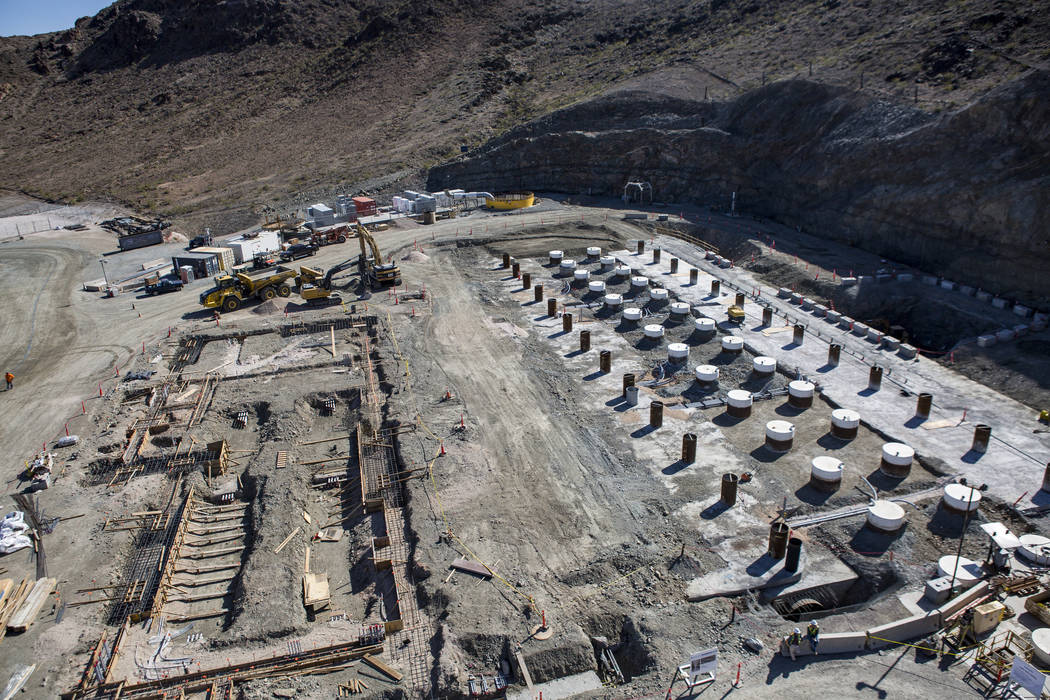Southern Nevada water agency’s budget not really in the red
The Southern Nevada Water Authority appears to have a $146 million hole in its budget for next year, but officials don’t seem concerned about it. It’s actually an improvement of almost $20 million over the agency’s current spending plan.
So why all the red ink?
It’s not really red, according to authority general manager John Entsminger.
During a budget presentation to the authority board Thursday, Enstminger said that there is no revenue shortfall when you factor in the $520 million in bond debt the authority took on in 2016 to pay for such major construction projects as the $650 million low-lake-level pumping station being built at Lake Mead.
“It looks like we’re spending more money than we’re bringing in, but we’re continuing to spend down those bond proceeds,” he said.
The authority’s $662 million budget for the coming year includes a 4 percent increase in overall revenue and a 1 percent increase in spending, and Entsminger said the agency’s reserve fund is in better shape than expected.
That should eliminate the need for the authority to sell more bonds and take on more debt for three or four years at least, he said.
The authority expects to boost revenue more by increasing its wholesale delivery charge for the first time in five years.
The authority’s member utilities pay $303 per acre-foot of treated water and $232 per acre-foot of raw water, but those charges will go up respectively to $313 and $238 this year and $323 and $244 in 2019.
Authority board members approved the delivery charge increase and the new budget in separate votes Thursday.
The action came 10 days after the Las Vegas Valley Water District, the authority’s largest member utility, approved its budget for the coming year, with a $65 million deficit due to be covered with bond revenue.
The district, which shares office space and some personnel with the authority, plans to spend just over $480 million between now and June 30, 2019. That’s a 12 percent increase over the current budget year and $109 million more than the utility spent in fiscal 2016-17.
Most of the increase is because of higher operating expenses and steep increase in capital costs, including the replacement of aging distribution lines, the construction of a new reservoir in the west valley and an effort to install 11,600 back-flow prevention devices on large commercial water meters across the valley.
Contact Henry Brean at hbrean@reviewjournal.com or 702-383-0350. Follow @RefriedBrean on Twitter.






















